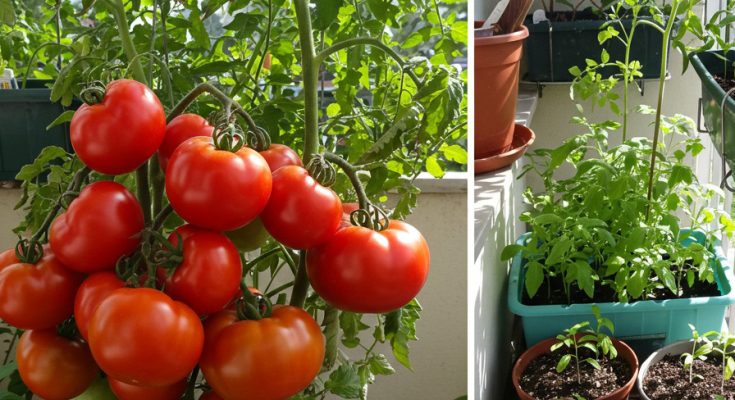If you want to grow strong, healthy tomato, cucumber, and pepper plants while maximizing your harvest, it is essential to prepare the soil correctly before planting. Many experienced gardeners use natural ingredients in the planting hole to give seedlings a strong start. In this article, we will explore a few natural methods that have been used for generations to ensure plants grow quickly, stay healthy, and produce an abundant yield.
Why Add Natural Ingredients to the Planting Hole?
When we plant tomatoes, cucumbers, and peppers in the spring, the soil is often depleted of essential nutrients. Even if the soil contains macro and microelements, these nutrients may not be readily available to the plants. As a result, seedlings may struggle to grow and absorb what they need to thrive. While some gardeners use chemical fertilizers, natural alternatives can be just as effective without harming the soil or environment.
By incorporating the right natural materials into the hole before planting, we can provide seedlings with an immediate boost of nutrients, enhance root development, and ensure plants grow quickly and robustly. These methods are time-tested and have been used by gardeners for over 50 years.
The Best Natural Ingredients for the Planting Hole
1. Wood Ash: A Powerful Fertilizer for Healthy Plants
One of the best natural fertilizers to add to the planting hole is wood ash. This common household byproduct is rich in potassium and phosphorus, two essential nutrients that help plants establish strong roots and encourage flowering and fruiting. Wood ash also contains calcium, which helps prevent diseases like blossom end rot in tomatoes and peppers.
To use wood ash, simply sprinkle a small handful into the planting hole before placing your seedling. It acts as a slow-release fertilizer that nourishes the plants throughout the growing season. Additionally, wood ash helps regulate soil pH by reducing acidity, making it an excellent amendment for many vegetable gardens.
2. Peas or Corn: A Surprising Source of Nutrients
Few gardeners realize that adding peas or corn kernels to the planting hole can significantly benefit tomato, cucumber, and pepper plants. Peas, in particular, are a natural nitrogen fixer, meaning they enrich the soil with nitrogen, a crucial element for plant growth. If you grow peas in your garden, consider saving some to use as a natural fertilizer.
Similarly, corn kernels (such as those used for animal feed) break down slowly in the soil, gradually releasing nutrients that enhance plant growth. To use this method, place a small spoonful of dried peas or corn at the bottom of the planting hole before adding soil and planting your seedling.
3. Eggshells: A Long-Lasting Source of Calcium
Eggshells are an excellent natural fertilizer that provides a prolonged source of calcium. Calcium is essential for preventing diseases like blossom end rot in tomatoes and peppers, and it also contributes to strong cell walls in plant tissues.
To use eggshells, crush them into small pieces and add a handful to the planting hole before placing your seedling. Over time, the shells decompose, slowly releasing calcium into the soil. This method also helps regulate soil pH and prevents common plant diseases.
4. Nettle Leaves: A Rich Source of Micronutrients
Another highly effective natural ingredient for planting tomatoes, cucumbers, and peppers is nettle leaves. Nettles are rich in iron, magnesium, and other trace elements, all of which are essential for plant health. Adding young nettle leaves to the planting hole can provide a slow-release source of nutrients, strengthening seedlings and boosting their resistance to pests and diseases.
If you have access to nettles, harvest some (while wearing gloves) and place a few leaves at the bottom of each planting hole. If the nettles are large, you can tear off the tops and cover them with a thin layer of soil before planting.
Combining Ingredients for Maximum Benefits
Instead of using just one of these ingredients, try mixing them together for an all-in-one organic fertilizer. This combination will provide plants with essential nutrients, improve soil structure, and support long-term plant health. Here’s a simple organic planting mix:
-
- 1 handful of wood ash
- 1 tablespoon of crushed eggshells
- 1 tablespoon of dried peas or corn kernels
- A few young nettle leaves
By adding this mix to the planting hole, you ensure that your plants receive a strong nutritional foundation, reducing the need for additional fertilizers throughout the season.
Additional Tips for a Healthy Garden
-
- Watering and Mulching: Once your seedlings are planted, water them thoroughly and apply mulch around the base. This helps retain moisture, suppress weeds, and regulate soil temperature.
- Companion Planting: Consider planting basil, marigolds, or onions near your tomatoes, cucumbers, and peppers. These companion plants help repel pests and improve overall plant health.
- Organic Pest Control: If you struggle with snails, aphids, or other pests, try using crushed eggshells, neem oil, or homemade garlic spray to protect your plants.
Conclusion
Using natural ingredients in the planting hole is a simple yet highly effective way to give your tomatoes, cucumbers, and peppers the best possible start. Whether you choose wood ash, eggshells, peas, corn, or nettle leaves, these organic methods provide essential nutrients that support strong growth, increase productivity, and help prevent common plant diseases.
By following these time-tested techniques, you can grow healthier plants with minimal effort and enjoy a bountiful harvest throughout the season. Try incorporating these natural fertilizers into your planting routine, and see the difference they make in your garden!
For more gardening tips, check out our videos on reviving struggling plants during droughts and creating your own organic fertilizer. Also, learn how to protect your plants from snails and other pests while enhancing soil structure naturally. Happy gardening!

